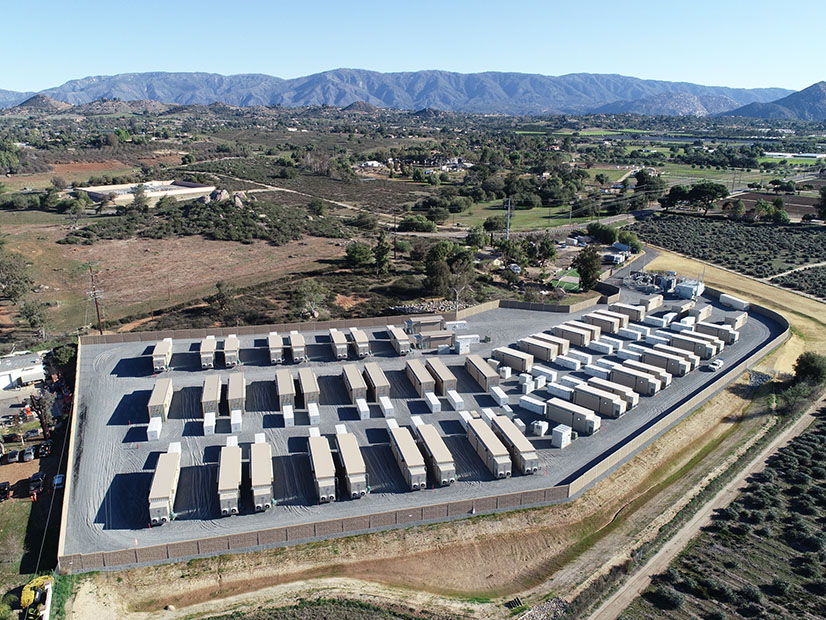The CAISO Board of Governors and Western Energy Imbalance Market (WEIM) Governing Body voted unanimously May 22 to approve an expedited proposal to increase the ISO’s soft offer cap from $1,000/MWh to $2,000.
CAISO staff and stakeholders participating in the ISO’s Price Formation Enhancements (PFE) Working Group quickly crafted the plan as part of a strategy to improve the bidding prospects of energy-limited resources — such as battery storage and hydroelectric resources — ahead of late summer.
The ISO hopes to win FERC approval for the proposal by Aug. 1, the date that typically marks the start of the most challenging period for grid operations in the West because of declining hydro availability and the onset of what usually are the warmest conditions of the year in California’s load centers.
Grid operators across the region are preparing for the prospect of tight supplies this summer based on low water conditions in the Northwestern U.S. and the Canadian province of British Columbia.
“I see these changes as urgent, given the difficult hydro conditions in the Pacific Northwest. The market will benefit if more hydro resources are fully in the market as much as they can be,” Governing Body Chair Andrew Campbell said during the body’s joint session with the ISO’s board. “There’s urgency for batteries too. There’s so many batteries online this summer, and I support relying more on the market to manage charge and discharge rather than market operator directives.”
The two-part proposal is designed to allow energy-limited resources with “intraday opportunity costs” — specifically batteries and hydro — to factor those costs into their default energy bids (DEBs), but the new rules will apply to gas-fired generation as well. The ISO has emphasized that all resources will still need to justify the costs behind their bids. (See CAISO Moves for Expedited Change to Soft Offer Cap.)
Those opportunity costs arise on stressed days for the grid when supplies become tight, usually from extreme weather. In those circumstances, an energy-limited resource committed to the market at the $1,000/MWh soft offer cap can find itself dispatched at high prices occurring relatively early in the day, leaving it unable to provide energy later when prices are even higher.
To address the issue, the proposal seeks to revise CAISO’s rules related to FERC Order 831, the 2016 directive that required RTOs and ISOs to limit the market bids of energy resources to the higher of either a soft offer cap of $1,000/MWh or a cost-based offer already verified by the market operator, up to a hard cap of $2,000 MWh.
‘Loud and Clear’
The proposal had solid backing from many industry stakeholders, including hydro-heavy WEIM participants Bonneville Power Administration and Seattle City Light, and was endorsed by CAISO’s Market Surveillance Committee (MSC) during its May 15 meeting.
Some stakeholders, such as BPA and the Western Power Trading Forum, expressed concern about a last-minute change to the proposal that limits storage resources to bidding above the $1,000/MWh cap only in the real-time market — and not in the day-ahead market — made in response to the MSC’s opinion that the ISO’s integrated forward market process already solves the opportunity cost issue for storage in the day-ahead.
Opponents included the California Public Utilities Commission and its Public Advocates Office, both of which raised concerns about the potential costs to ratepayers from increasing the cap and the speed with which the plan moved through CAISO’s stakeholder process.
Supporters among stakeholders and the CAISO and WEIM oversight bodies emphasized the measures should be considered only a temporary remedy. Some said the PFE Working Group should come up with a more complete solution before summer 2025, one that would more completely address the bidding requirements for storage and take up the needs of hybrid and demand response resources as well.
After expressing gratitude for the quick efforts by CAISO staff and stakeholders on the proposal, ISO Board Chair Jan Schori acknowledged how much more needs to be done on the matter.
“I am hearing loud and clear, from all the comments that we’ve received, that we simply have to do a lot more work on batteries and storage, and particularly fixing the [bid-cost recovery] rules,” Schori said. “But [batteries] are unique; they are different; and we need to probably come up with a set of rules that really works to match that resource and enable us to both have it be a long-term resource for the industry and for customers, but also to make sure it’s deployed at the time that we need it available to us to address the reliability issues that we may be confronting.”

